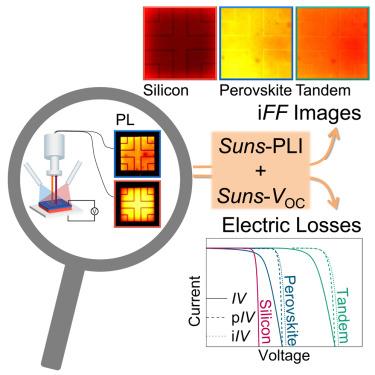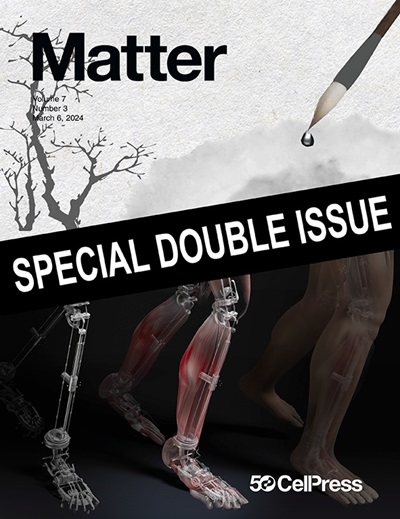Revealing charge carrier transport and selectivity losses in perovskite silicon tandem solar cells
IF 17.5
1区 材料科学
Q1 MATERIALS SCIENCE, MULTIDISCIPLINARY
引用次数: 0
Abstract
Monolithic perovskite silicon tandem solar cells reach efficiencies beyond the theoretical efficiency limit of silicon single-junction solar cells. However, the metastability of perovskite materials and the increasing number of functional layers with increasing number of junctions undermines their stability. This poses a significant challenge for industrialization. To enable fast progress in performance and stability, advanced characterization methods tailored for metastable perovskite-based tandem solar cells are essential. This work discusses the Suns open-circuit voltage (Suns-VOC) and intensity-dependent photoluminescence (Suns-PL) imaging methods, which are specifically adapted to perovskite silicon tandem solar cells. Spatially resolved implied open-circuit voltage and implied fill factor images facilitate the localization of losses in large-area solar cells, supporting root-cause analysis of electrical limitations. Furthermore, subcell-resolved Suns-VOC measurements of the tandem solar cells allow charge carrier transport losses to be quantified. Combining both methods allows selectivity losses to be identified. Challenges of the methods are thoroughly analyzed, ensuring reliable measurements with the appropriate measurement routine.

揭示钙钛矿硅串联太阳能电池中载流子输运和选择性损失
单片钙钛矿硅串联太阳能电池的效率超过了硅单结太阳能电池的理论效率极限。然而,钙钛矿材料的亚稳性和功能层数量随结数量的增加而增加,破坏了它们的稳定性。这对工业化构成了重大挑战。为了实现性能和稳定性的快速发展,为亚稳钙钛矿基串联太阳能电池量身定制的先进表征方法是必不可少的。本工作讨论了太阳开路电压(太阳- voc)和强度相关光致发光(太阳- pl)成像方法,这是特别适用于钙钛矿硅串联太阳能电池。空间分辨的隐含开路电压和隐含填充因子图像有助于大面积太阳能电池损耗的定位,支持电气限制的根本原因分析。此外,亚电池分辨太阳voc测量串联太阳能电池允许电荷载流子输运损失被量化。结合这两种方法可以确定选择性损失。方法的挑战进行了彻底的分析,确保可靠的测量与适当的测量程序。
本文章由计算机程序翻译,如有差异,请以英文原文为准。
求助全文
约1分钟内获得全文
求助全文
来源期刊

Matter
MATERIALS SCIENCE, MULTIDISCIPLINARY-
CiteScore
26.30
自引率
2.60%
发文量
367
期刊介绍:
Matter, a monthly journal affiliated with Cell, spans the broad field of materials science from nano to macro levels,covering fundamentals to applications. Embracing groundbreaking technologies,it includes full-length research articles,reviews, perspectives,previews, opinions, personnel stories, and general editorial content.
Matter aims to be the primary resource for researchers in academia and industry, inspiring the next generation of materials scientists.
 求助内容:
求助内容: 应助结果提醒方式:
应助结果提醒方式:


